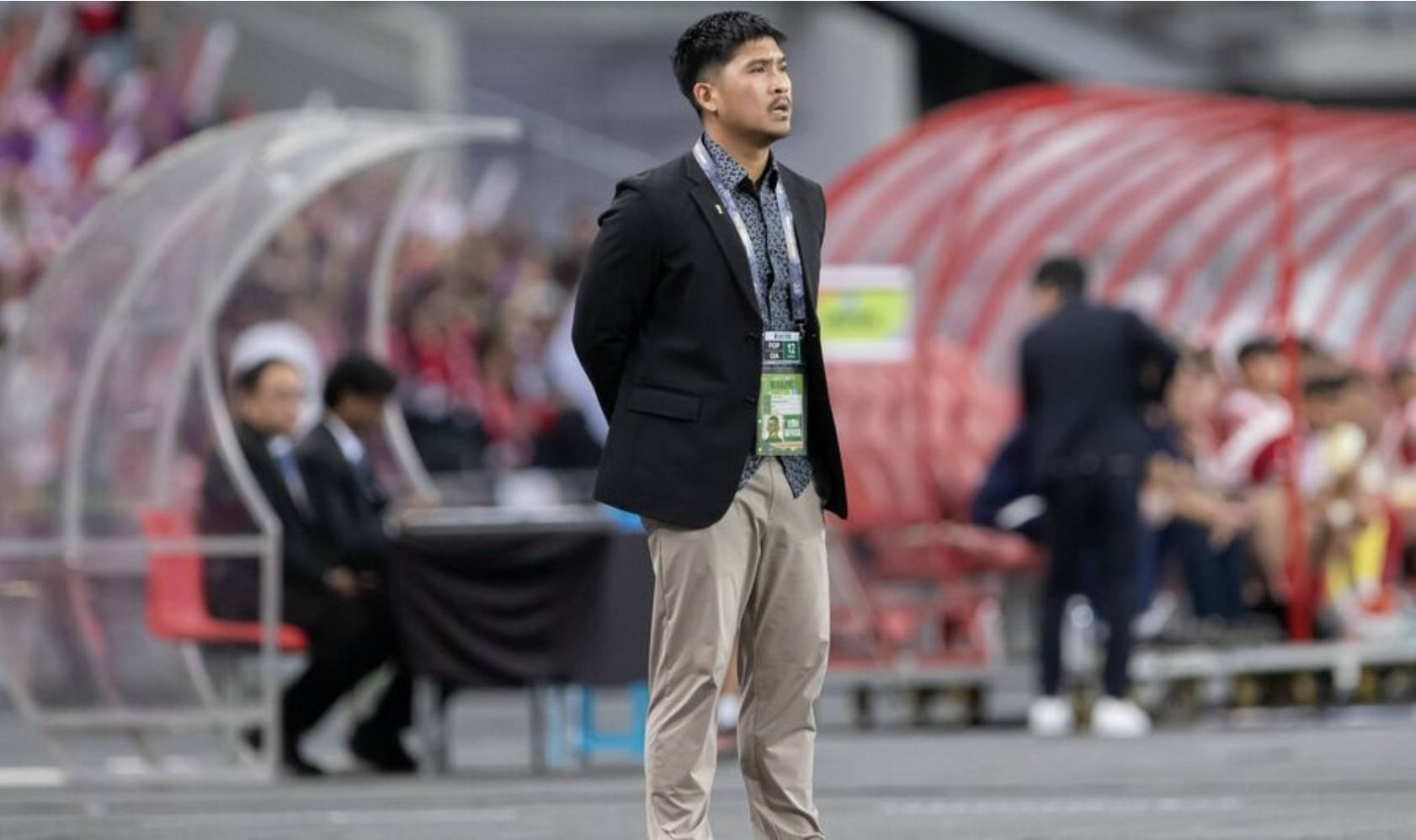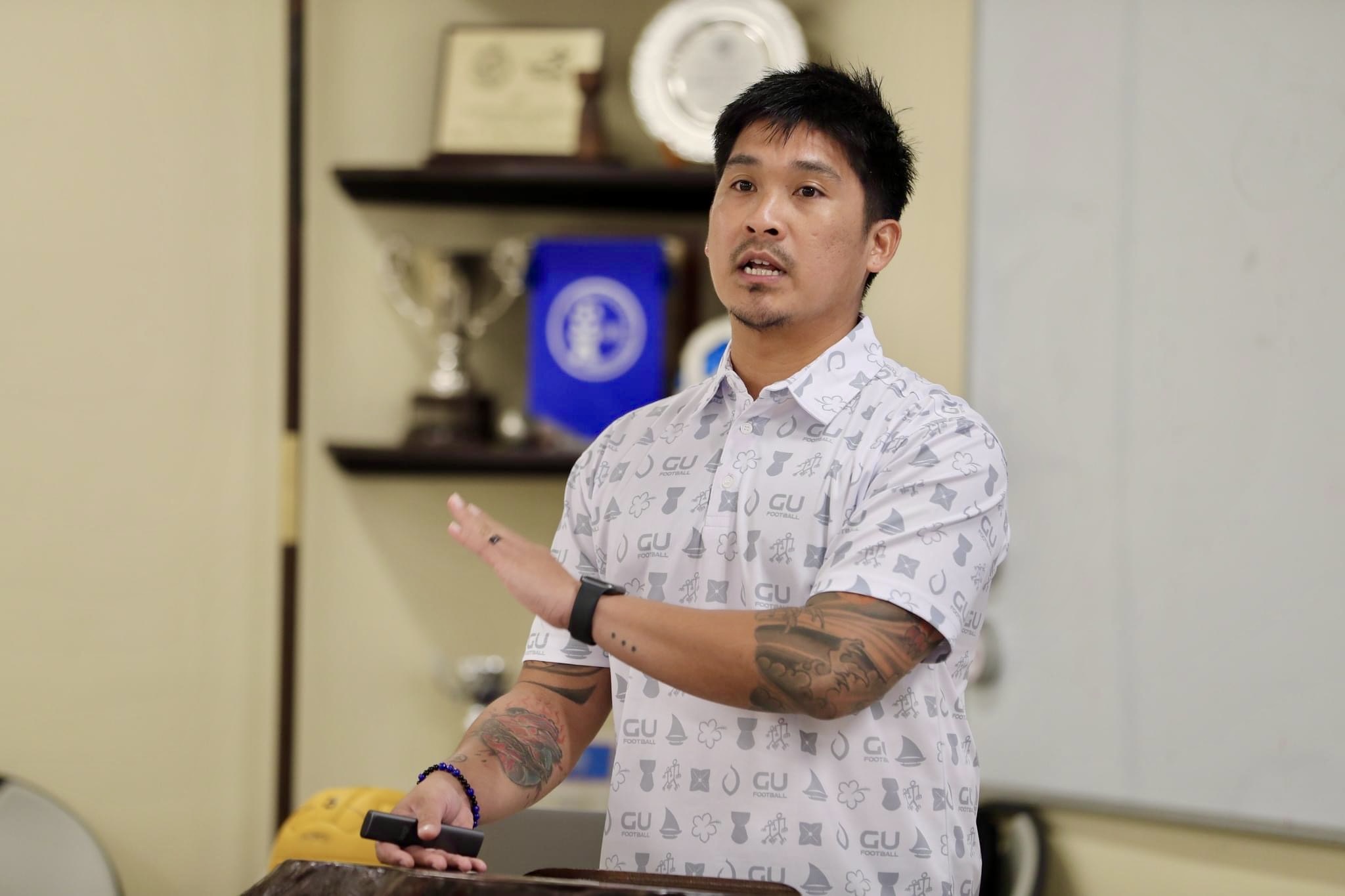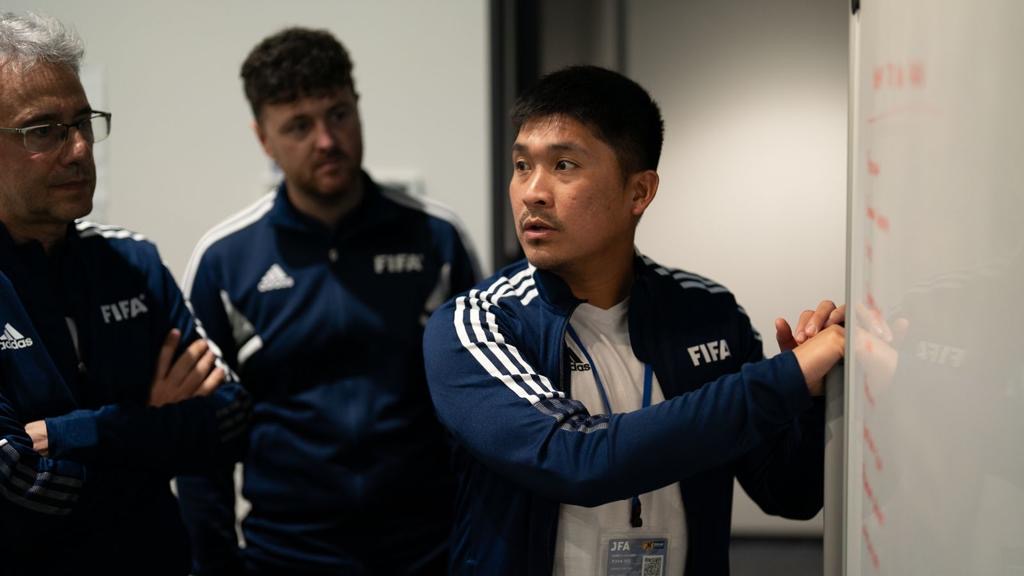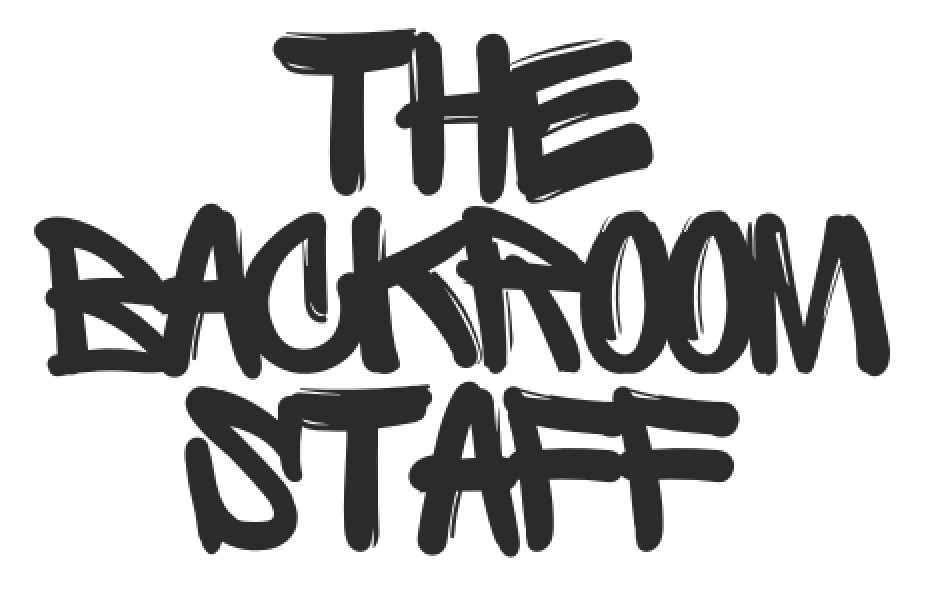Geographically remote and with a population of just over 170,000, Guam faces unique challenges in competing on the global football stage. Despite these hurdles, Ross Awa, Guam’s Technical Director and Head Coach of the men’s national team, is committed to growing the sport and building the foundation for future success.
A former member of Guam's youth national teams, Ross has spent a decade within the Guam FA across a number of roles. Additionally, Ross - along with just 22 others - graduated from FIFA’s first ever cohort of FIFA Technical Leadership Diploma and has traveled the world on a mission to advance football on Guam.
In this interview, Ross shares insights into his role atop the FA, balancing long term ambitions with short term goals, and the challenges and the opportunities facing football on the island.
The interview has been condensed and lightly edited for grammar and clarity.

[ Background ]
On Guam, football was not as popular as other sports like baseball, basketball, and volleyball during my time as a youth player. I initially played baseball and volleyball before I began playing football later on.
I was around 13 years old when my school teacher suggested I try out for the school football team and that’s how I first got into the game. Many of my teammates were quite experienced and the environment definitely helped me develop. This involvement caught the attention of coaches from the youth national teams, leading to trials and my selection into the talent pool.
When I finally joined the youth national team programme, I primarily played as a midfielder and winger. However, during one match, our goalkeeper was unavailable, and they needed someone to step in for the match. Considering my abilities in basketball and volleyball, I offered to give it a try. To my surprise, it went well, and I began training as a goalkeeper!
Although coaching was not something I initially pursued, I found myself getting involved early on. After high school, I took on various side jobs and began assisting coaches at the youth level—covering both high school and middle school teams.
[ Where does football rank in popularity on Guam now? ]
I’d say, in the last 10 years or so, football has definitely climbed and made its way to the top or close to it. During COVID, we lost a little momentum which was quite challenging. The restrictions meant we were really limited in the amount of football competitions and even training we could do.
The likes of American football, volleyball and basketball are definitely in the mix, while baseball in particular is a huge thing here on the island - these sports have been around a long time after being introduced following our liberation during World War II. But, in terms of growth and participation, football is definitely the biggest on the island right now.
[ Coaching badges ]
I was coaching at St. John’s School, a school on Guam for about 6 years before I got the opportunity to start coaching in the National Academy. There, I started with the under-12’s and started to take my coaching licenses. The technical director at the time was conducting the courses for the D license and that is how I got my foot in the door to further my coaching journey.
Since then, I have done several additional courses and gotten the A license and even a goalkeeping level 1 that I did in Australia. During that time coaching courses on Guam were done by overseas coach educators from the AFC (Asian Football Confederation).
Guam is fascinating due to its diversity! As a U.S. territory, we hold U.S. passports, yet we are part of the AFC and our culture is heavily influenced by Asia, all while being geographically located in Oceania!
[ What is within your scope as technical director? ]
As a technical director, one of my biggest responsibilities is ensuring that we have proper development programs. It's about the long term development of football here, for the players, the clubs and for the coaches.
Establishing development pathways for our players is crucial. Currently, we have the U17 and U20 national training programmes, and we are working on creating a college pathway for them to continue their playing careers after high school. Unfortunately, we lack sufficient competitions at this time—there is only one university on the island that participates in our league, depending on whether they have a team that season.
I play a big part in our coaching education, including conducting coaching courses on the island. We don’t have a ‘proper’ football culture like many other nations, so we have to place a lot of emphasis on education and really tailoring everything for our learners to get them engaged and thinking about how we can develop players in the best way.
I have a significant responsibility for the technical direction of our national teams. This role involves collaboration rather than a top-down approach. A central element of our strategic plan is to establish a clearer identity and strengthen the connection between our teams and our community.
As the technical director, my responsibilities cover both the men’s and women’s teams. Currently, I also serve as the head coach for the men’s national team, which requires me to balance both roles effectively. In my position as technical director, I focus on long-term development, while as the senior coach, my emphasis is on achieving results.
"we have to place a lot of emphasis on education and really tailoring everything for our learners to get them engaged and thinking about how we can develop players in the best way"

[ Do you have problems with players who stop playing early in their careers? (e.g. after playing in University or due to other work requirements) ]
Despite the growing number of players, retention within the program is definitely one of the challenges that we face. Currently, there’s the big question, after college - what’s next? We have some players that keep playing in the different leagues out there in the US which is very helpful and beneficial because if they're not in a consistent football program, it’s very challenging for us as coaches to bring them in for camps or competitions.
One of the things we want to do is create an environment, or even relationships with other clubs - not just in the US, but globally - that will be able to support our national team players.
[ How do you fit into the bigger picture at the FA? Who are you working with on a regular basis? ]
I work closely with the general secretary, reporting on the programmes we are evaluating. We put considerable emphasis on effectively communicating these ideas to our stakeholders.
In addition to the general secretary, I frequently collaborate with my technical team, which includes staff members from our technical departments dedicated to youth development, coach education, administration, and high performance.
I am also fostering relationships with our member clubs—there are 13 on the island—and I strive to balance all my responsibilities while being accessible to them to explore how we can support their needs. Club development is crucial for our growth as a national association, and we rely on their collaboration to enhance player development and promote the sport overall.
[ Can/do you take ‘inspiration’ or strategies from other countries that are maybe a step or two ahead of Guam that could be implemented in your overarching strategy? ]
We’ve developed a strategic plan involving various stakeholders including the government, the fans, the member clubs and of course the players as well. We want to find the biggest areas to address in terms of developing our football.
When I took on the role of technical director, there were programmes established by previous directors. My first step was to assess which programmes had been effective in the past. We also examined best practices globally; for example, we had an opportunity to gain further insights from Australia, Japan and South Korea. Recently, I visited Brazil and the Netherlands with FIFA where I had an opportunity to observe their initiatives and consider how we might adapt those concepts. From there, we need to remain open-minded and determine which programmes are feasible for us to implement while aligning with our culture and football development plan.
"I visited Brazil and the Netherlands with FIFA where I had an opportunity to observe their initiatives and consider how we might adapt those concepts"
[ Are you also looking into futsal or other ‘versions’ of football as a path for development? ]
Absolutely. We had a beach soccer league for a while and are looking to bring that back. We also have futsal leagues that are ongoing but not up to the national team level for futsal or beach soccer. It’s an area we’d definitely like to explore but with the population, we have to make some considerations that maybe some of the same players will be called up for 11-a-side and futsal or beach soccer!
In my previous role as assistant technical director, alongside coach education, I was working on developing futsal and beach soccer. I’d hold beach soccer pop-up events on the weekends and it was growing in popularity again, so I’d love to bring it back to the GFA.
[ How involved are you in the scouting and identification process for the national teams? ]
Yes, I engage extensively in scouting and talent identification, with many of these responsibilities also shared among our more experienced coaches. We focus primarily on domestic scouting by observing the leagues in Guam for potential players. Additionally, we organize identification camps overseas, primarily in the United States, which provides us an opportunity to monitor our existing players and evaluate new talent in person.
[ How do you ‘market’ these ID camps so that players with Guam heritage find out about them? ]
A lot of it comes down to familial connection - a lot of them have relatives on the island who might have seen our social media or heard about it and passed it on. The player or their family will usually reach out and share their ties to the island and we begin a whole process with them to ensure they are eligible to play for us before we get them into our identification camps.
The FIFA requirements on this are quite clear. If the players themselves weren’t born on the island, then either one of their parents or even grandparents must be. In addition, the need to be a US passport holder. Alternatively, if the player has stayed on the island for at least 5 years consecutively and can prove this prior to being called up they can be eligible. This is across the board from U17 all the way through the senior teams.
[ What are some of the big challenges facing you and football on Guam? ]
One of the major challenges we currently face is the lack of resources, especially in terms of infrastructure around the island to develop and play the game. Our National Training Center suffered damages from a typhoon, resulting in the loss of lighting, which limits our training time due to reduced daylight hours. This makes it extremely difficult to schedule training sessions after players finish school or work, as it becomes too dark to play. Additionally, we are striving to secure more football pitches for our member clubs, which will be a crucial step toward our growth and development.
[ What are realistic goals for football on Guam in the near future? ]
One of my primary goals is to establish a clear and consistent pathway to effectively develop the players needed for successful competition. Supporting this initiative involves offering more competitions for our players, particularly on our home soil. Hosting home matches is incredibly valuable and will contribute to the growth of our football culture by allowing the community to witness our games more frequently.
I would like to provide support towards the aim of narrowing the gap with other nations, particularly in our region. It is essential for us to ensure that our national teams have consistent competitions, and we must continually evaluate whether we are playing enough matches and if those matches are suitable for our country’s needs.
[ Your future career plans? ]
I have recently graduated from the FIFA Technical Leadership Diploma, which has significantly broadened my perspective on the global game, extending beyond what’s happening in Guam or Asia. This invaluable experience has contributed to my growth as a technical leader, and I believe I have much to contribute in various contexts worldwide. If a suitable opportunity arises abroad that aligns with my values and family’s needs, I would certainly consider it a valuable experience.

